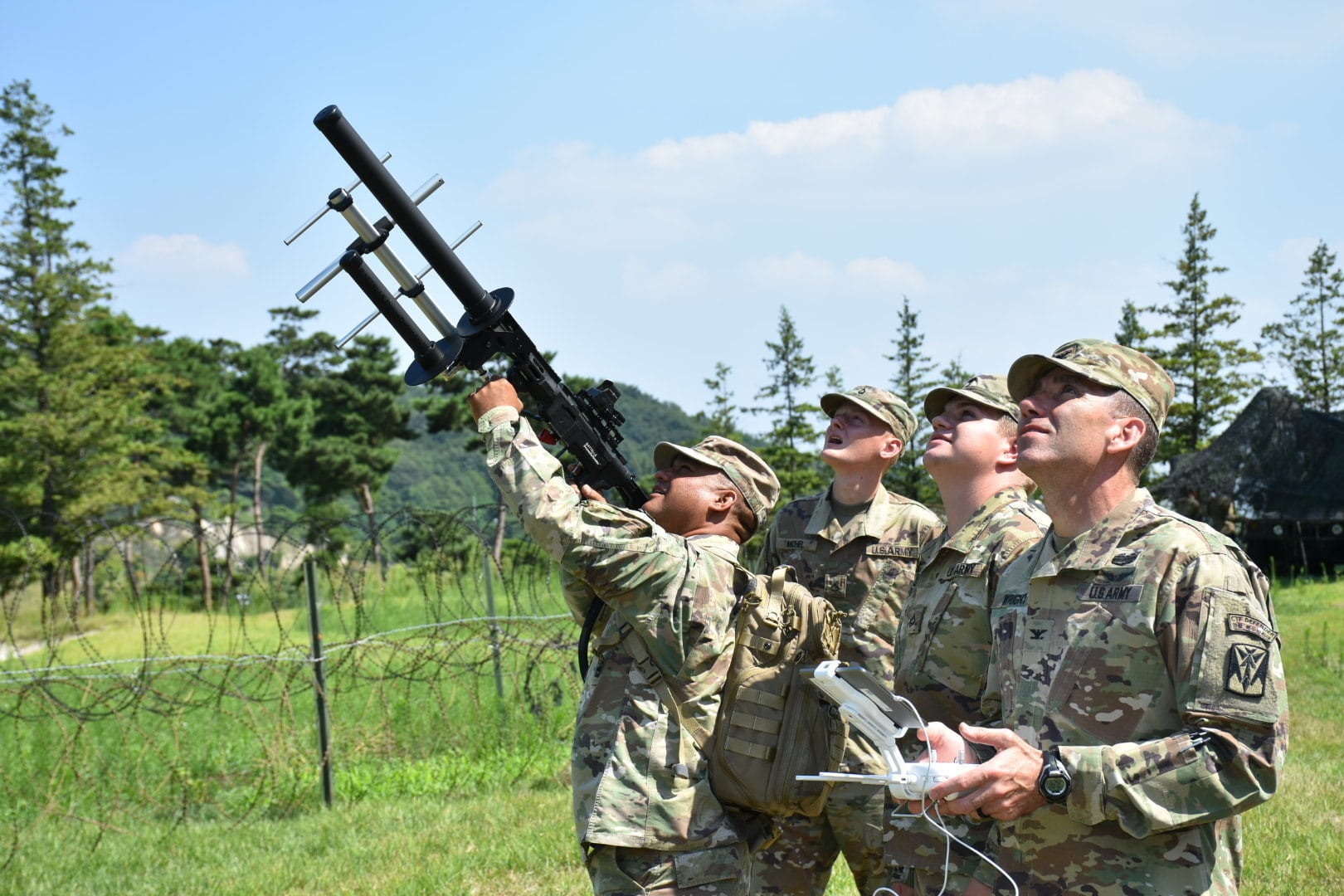WASHINGTON — The first opportunity for industry to demonstrate technology for the Pentagon’s enduring counter-drone capability will take place in April, according to the two-star general in charge of the joint effort.
The Defense Department is developing a counter-small unmanned aircraft system capability for use domestically, in host nations and in conflict. The Pentagon established the Army-led Joint Counter-Small Unmanned Aircraft Systems Office, or JCO, and approved a set of requirements to help counter small drones in September 2020, which laid a path for how industry can develop technology to plug into a single command-and-control system.
The department released its first joint C-sUAS strategy Jan. 7 and will come out with an implementation plan that maps out a course of action by the end of the month. The strategy was just recently released, but the JCO has worked since its inception to produce an enduring set of systems.
Over the first week of April, the first common test range event with industry will be held by the Army’s Rapid Capabilities and Critical Technologies Office as well as the Air Force, Army Maj. Gen. Sean Gainey, the JCO director, said during a Jan. 8 Center for Strategic and International Studies virtual event.
The Pentagon plans to host these demonstrations twice a year at common test ranges to evaluate current and future technologies, which might help the JCO decide the best-of-breed options to develop a permanent solution.
Industry will have the opportunity to bring all of its “low-collateral effectors” to the range, Gainey said, and the team will choose the best systems from the demonstration to “move forward with a joint solution,” Gainey said.
Gainey did not state where the demonstration would occur but did say event information would be posted for industry on Jan. 15. The JCO identified three sites for common test ranges to conduct evaluation and for the testing of promising counter-drone technology, but it has yet to reveal those locations.
RELATED

While the office is now on a rapid road ahead to execute a strategy to defend against small drones and is headed toward the development of permanent solution set, it has already taken 40-plus systems that were rapidly procured for wars in the Middle East, and it whittled the selection down to three interim systems-of-systems approaches that address fixed and semi-fixed sites.
And for the time being, it picked the Light Mobile Air Defense Integrated System from the Marine Corps as a mounted or mobile system. On the dismounted, hand-held side, the systems that will temporarily fill the gap are the Bal Chatri, the Dronebuster and the Smart Shooter.
The command-and-control system that will be used until something more capable comes along will be the Forward Area Air Defense C2 system, which is sponsored by the Army. It includes interoperable systems from the Air Force and the Marine Corps.
The JCO should expect a deep bench at the demonstration as industry continues to advance technology when it comes to the challenge of countering small drones. An industry open house held last fall had roughly 500 industry representatives tune in.
Jen Judson is an award-winning journalist covering land warfare for Defense News. She has also worked for Politico and Inside Defense. She holds a Master of Science degree in journalism from Boston University and a Bachelor of Arts degree from Kenyon College.







